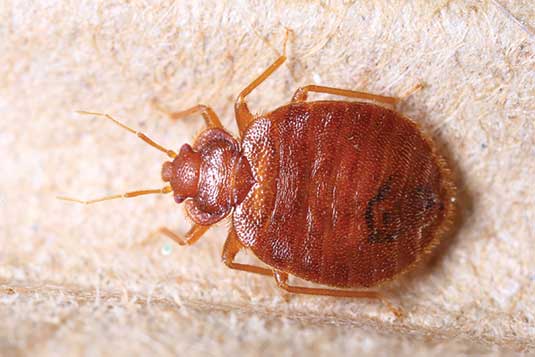Q: A customer with a bed bug problem also has expensive, framed art hanging on the wall. We found a bed bug behind the glass of one of these pictures. We don’t want to spray the frames for fear of damaging the artwork. The customer read that you can wrap things tightly in plastic wrap for two days and the bed bugs will suffocate. Is that true? What other options do we have? H.H., Vt.
A: Isn’t the Internet wonderful? It is full of home remedies for almost everything. Most of them don’t work. I’ve seen bed bugs in sealed glass vials live for weeks. Imagine trying to get all of the air out of a wrapped picture frame. It is almost impossible.
You have several options. The first is to remove the artwork and have it fumigated. This is not always practical. Another option is heat, but you would need a large enclosure in which to place the frames and artwork.
I suggest placing the affected items in large plastic bags (or wrap them in plastic). Then introduce dichlorvos (DDVP) strips for a week or two. The fumes should penetrate the frames and kill any stages of bed bugs residing there. Just be careful not to permit the strips to directly contact the art; they might stain it.
Q: A residential property was treated a year ago with a repellent termiticide. The owner has some concerns about repellent termiticides, and has asked me to treat the property with a non-repellent termiticide. Can I do this, and is there any negative reaction between the two types of termiticides? T.S., Pa.
A: There will not be any negative reaction between the two types of termiticides. However, the repellent termiticide might keep the termites from foraging into the non-repellent product — which would reduce its effectiveness. When the non-repellent product concentration in the soil is reduced over time, though, termites eventually will penetrate it and enter the non-repellent product area.
The other issue is a legal one: You may make a retreatment to a property if you do not know the history of any previous treatments. Because you didn’t make the previous treatment, you should be able to do the retreatment legally.
Q: We did a mouse job in a private residence that has crawlspaces. The insulation in the crawlspaces was soaked with urine in some areas, so we removed the insulation after the job was completed. Now the house is on the market, and a home inspector refuses to enter the crawlspaces unless they are “decontaminated.” He is concerned because he can smell something. The homeowner has contacted us and asked that we decontaminate the crawlspaces. What should we do? F.I., Ill.
A: I’m not sure decontamination is necessary, but to satisfy everyone, I suggest you consider using a strong disinfectant. Spray down all exposed surfaces in the crawlspaces. Because this home inspector can smell “something,” be prepared to aerate the crawlspaces to remove any odors from your treatment or any other sources.
A lot of crawlspaces have odors that are usually harmless. Your treatment records for the decontamination should convince the inspector it is safe to enter the space.
Good luck with this one. Maybe the buyer should hire another home inspector.
Email your questions about insect identification and pest management technologies and techniques to Dr. Mampe at detomol@aol.com. Your questions most likely will be printed and answered in one of Pest Management Professional’s upcoming Ask the Expert columns.

Leave A Comment